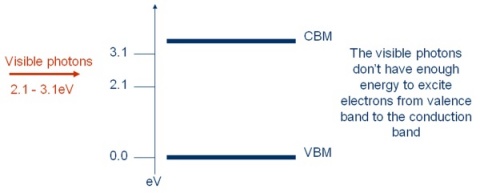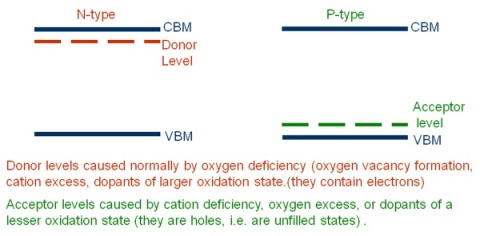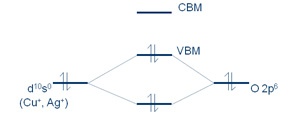

|
| Home | Research | Publications | Recent news | Group | Teaching |
|
Transparent conducting oxidesIntroductionTransparent conducting oxides (TCOs) are unique materials that combine optical transparency (band gaps greater than 3.1 eV) and concomitant electrical conductivity (carrier concentrations of at least 1020 cm-3). Band gaps greater than 3.1 eV ensure that visible light photons cannot excite electrons from the valence band (VB) to the conduction band (CB).  These transparent materials are thus made conducting by the introduction of defects, intrinsic or extrinsic into the system. TCOs can be classified as n-type or p-type, according to the defects and type of conduction of the material. These defects form split off acceptor (unoccupied) levels above the valence band maximum (VBM) in the case of p-type conduction, and donor (occupied) levels below the conduction band minimum (CBM) in the case of n-type conduction.  n-type TCOs (SnO2, ZnO, In2O2) are already utilised in a range of technological applications, but p-type TCOs have proved harder to manufacture. Most wide band gap binary oxides have valence bands dominated by O 2p states. Thus upon acceptor formation, the acceptor states (holes) are localised on oxygen ions, leading to low conductivity. Designing p-type TCOs with good conductivity has therefore become a major goal for materials scientists. Cu2O is a known p-type TCO, in which the good p-type conductivity is caused by favourable mixing between Cu(I) 3d10 and the O 2p states causing a more delocalised VB. However, Cu2O is not transparent, only having a band gap of 2.17 eV. In 1997, Kawazoe et al. first reported p-type conductivity in CuAlO2, which crystallises in the delafossite structure. CuAlO2 combines the p-type conduction properties of Cu2O, with the wide band gap of Al2O2, producing for the first time a native p-type TCO. They had realised that a suitable cation is needed to mix with the O 2p states, like in the case of Cu2O, and identified Cu(I) and Ag(I) as the best candidates  It has this been shown that Cu-based TCOs are superior to Ag-based TCOs, and many other Cu-based TCOs have been synthesised, including delafossites CuInO2, CuGaO2, CuScO2, CuCrO2, CuYO2 and the SrCu2O2 structure. To date, the p-type material with the highest conductivity is Mg doped CuCrO2. Email: watsong AT tcd.ie Last updated: Apr 14 2012 Back to Top |